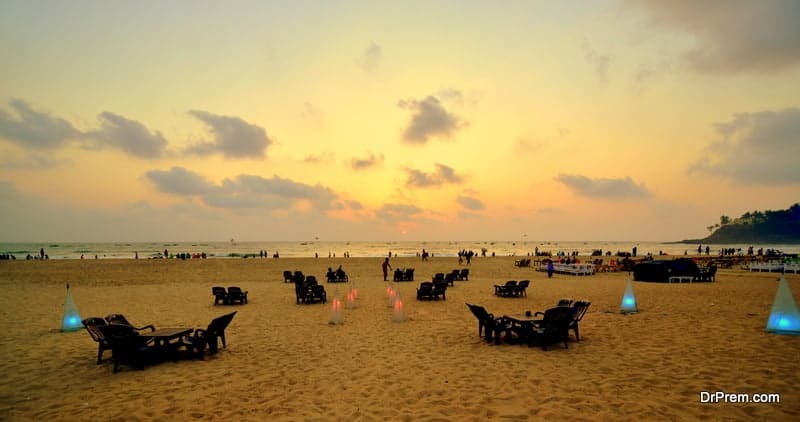Reaching out the unknown and unexplored has been the mankind’s pursuits ever since its evolution. A space industry events are no different from that. If you ask, what is Space Tourism, you are likely to receive some confusing answers. Most of us often equate space tourists with astronauts.
Space tourists are different from astronauts; in they go to space only for leisure, or recreational purposes, and not for any scientific research. Now many companies are researching and testing spacecrafts aiming to carry tourists to space on a regular basis. If space tourism is an ultimate dream for many, others are terrified of the consequences it may entail on us. Before analyzing the pros and cons of space tourism, let have a thorough understanding of this type of tourism, its history and different aspects.
In this space tourism guide, you will know about:
A Guide to Space Tourism by Dr Prem Jagyasi – Definition, History, Legal and Ethical aspects, astronaut’s tips, pros and cons, and many more
-
What is Space Tourism?
-
How Space Tourism started?
-
Understanding various aspects of Space Tourism
-
Is Space Tourism that important?
-
How to become a Space Tourist?
-
Special Space Travel tips from astronauts
-
Things you might not know of Space Tourism
-
Pros and Cons of Space Tourism
-
Leading Companies aiming to take travel into the space
-
Armadillo Aerospace
-
Space Exploration Technologies Corporation (Space X)
-
Virgin Galactic
-
Masten Space
-
XCOR Aerospace
-
Orbital Outfitters
-
Spaceport America
-
Blue Origin
-
Bigelow Aerospace
-
Paragon Space Development
-
CST-100 by Boeing
-
Dream Chaser by Sierra Nevada Corporation
-
Rocket by Stratolaunch
-
Liberty Launch System by ATK
-
How much you need to save before you travel into space
-
Everything you need to travel to and back from space
What is Space Tourism
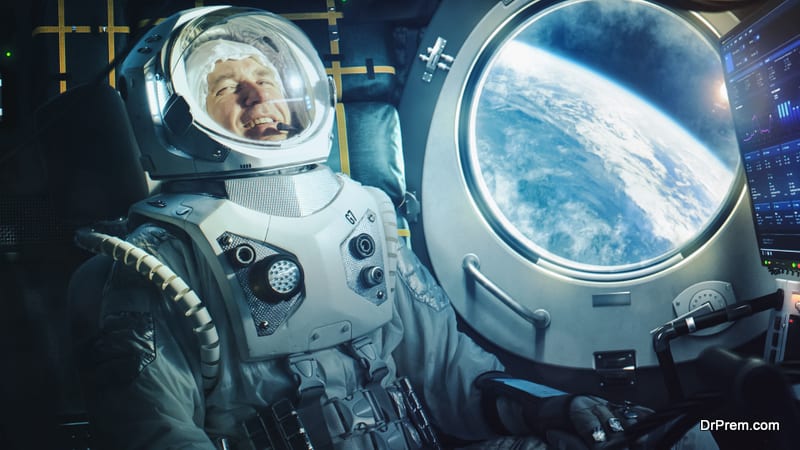
Travelling to space for recreational purposes is known as Space Tourism.It is another evolving sector in aviation industry that allows people other than astronauts explore the mysterious space beyond the earth. The prime motivating factors for space tourism is to view earth from space, experience zero-gravity weightlessness and unusual high speed, and knowledge gathering to contribute to scientific research and study.
Space tourism can be of different types –
Orbital space flight
Here the spacecraft is placed at a trajectory so as to remain in the space to complete at least one orbit. It should achieve the orbital velocity to remain in the orbital path. This incredibly high speed needed by the space vehicle makes it very complex and expensive for space tourism. Companies like Tesla are putting efforts to launch orbital spaceflights where the duration of space tourism will be longer.
Suborbital space flight
The spacecraft reaches the outer space with its trajectory intersecting the atmosphere of the surface and will fall back to the earth. It will not complete one orbital revolution or achieve escape velocity. The suborbital flights for tourists will aim to reach an altitude to qualify as reaching the space. They fly at a very low speed and come back to the earth after the engines are shut off. The travelers experience some moments of weightlessness as the spaceflight free falls towards the earth.
Lunar Space Tourism
This is about making trips to the moon with a suitable lunar spacecraft. Though it may sound wishful thinking, ordinary travelers may think of future lunar trips although it would involve incredible expenditure. Startup companies are planning to launch Lunar tourism on the moon’s surface or around it between 2023 and 2043.
Currently, commercial space tourism is carried on with high-altitude jet fighter flights and atmospheric zero-gravity flights.
How Space Tourism started?
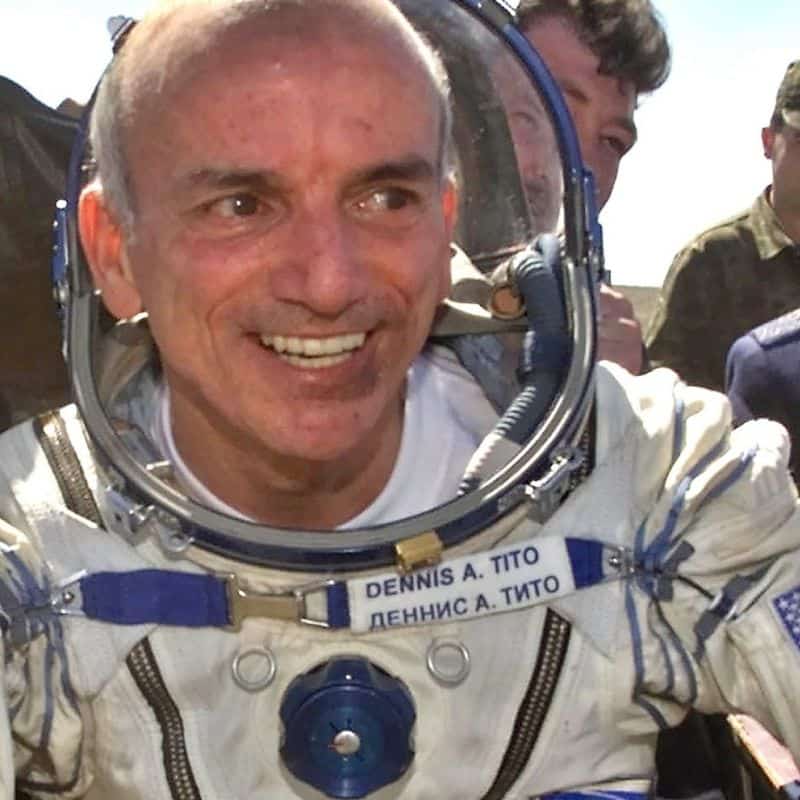
Image Source : ichef.bbci.co.uk
It has been more than 20 years when Denis Tito became the first ‘Space Tourist’ to fly to the International Space Station for a 6 day stay boarding the Soyuz spacecraft. He paid a hefty $20 million for his space tourism. Since then, only six individuals managed to take self-funded space travel facilitated by a joint venture between Space Adventures, a US-based space travel agency and Roscosmos, the Russian space agency.
Following Tito, the South African millionaire Mark Shuttleworth and the US businessman Gregory Olsen took flights to the ISS in 2002 and 2005 respectively. This was followed by Anousheh Ansari, the American entrepreneur, the first female to pay for the ISS flight in 2006. This was followed by another American billionaire Charles Simonyi who shared the spaceflight ride on Soyuz TMA in 2007 for a 10-day stay on the ISS.
He went for a second trip in 2009. The sixth person to take a trip to space in 2008 was Richard Gariott, a video game developer from the US who is also the 1st second-generation American to visit space as his father was an astronaut.
The year 2021 saw successful launching of suborbital space tourism by Virgin Galactic, Blue Origin and Space X. All these companies are planning to launch regular space travel services making space tourism a popular niche tourism. The cost? It is astronomically high where an individual should be ready to pay over $250,000 for a seat in sub-orbital spacecrafts and nearly $50 million for orbital spacecraft.
Although space remained elusive for individuals other than scientists and researchers, NASA centers used to be the only destination in space travel. However, these centers were not ready to be open for public but provided restricted access to designated officials for obvious security reasons.
Witnessing the growing interest in space exploration from non-scientist individuals, enterprising business personalities and civic leaders started developing special attractions themed on space travel. Museums, Hall of Fame, amusement parks, hotels, motels, and restaurants were opened centered on space exploration.
Between 1964 and 1967, the Kennedy Space Center extended visitor programming to access the under-construction NASA’s launch complex that included self-guided driving tours during holidays and weekends when construction work was at halt. When it was finally opened to public featuring indoor exhibition and outdoor ‘rocket garden’, it became a popular family outing spot. Since then, the Visitor Information Center evolved and expanded recording an annual 1.5 million people visits on average.
Understanding various aspects of Space Tourism
Space Tourism seems to be incredibly exciting. In near future, we are likely to see more space tourism participants racing for this unique tourism experience. But there are legal, medical, financial, and ethical aspects that merit a discussion.
Legal aspect

Legal aspect of space tourism will include three different stages: the earth’s surface, air space, and residence in orbit ISS. There is no clear demarcating line between the air space and outer space but the area above 110 km is normally considered as the outer space.
Currently, space tourism activities are governed by provisions on the Treaty on Principles Governing the Activities of States in the Exploration and Use of Outer Space known as “Outer Space Treaty”, UN COPUS (The United Nations Committee on the Peaceful Uses of Outer Space), and Chicago Convention (Convention on International Civil Aviation), et al.
However, as the industry evolves, there is a dire need of formulation of laws and regulations of private players thrusting enough responsibility to tourists, the country, and the planet as a whole. The legislation should clearly address specific issues on spacecraft registration, safety standards, license of the crew, space insurance, accidents and criminal activities in space, and legal rights and empowerment of tourists. Passenger liability is another important legal aspect in space tourism which different countries should adopt specific regulations.
Ethical aspect
To what extent commercial space exploration is beneficial to humanity? With money playing a big role in space tourism business, there is a potential for a monopoly market to dominate the entire market. Some suggest, it is more important to utilize resources for creating equal opportunities on the earth itself instead of planning to settling in other planets. Again, it will be dominated by the privileged affluent class.
It might be argued that human beings should take the responsibility of the planet where they are born instead of spending resources on space exploration that could be detrimental to earth. However, a consequentialist debate may prove to create more benefits in the long run like enhancement of innovation and scientific research that would improve the quality of life for humans in future.
Is Space Tourism that important?
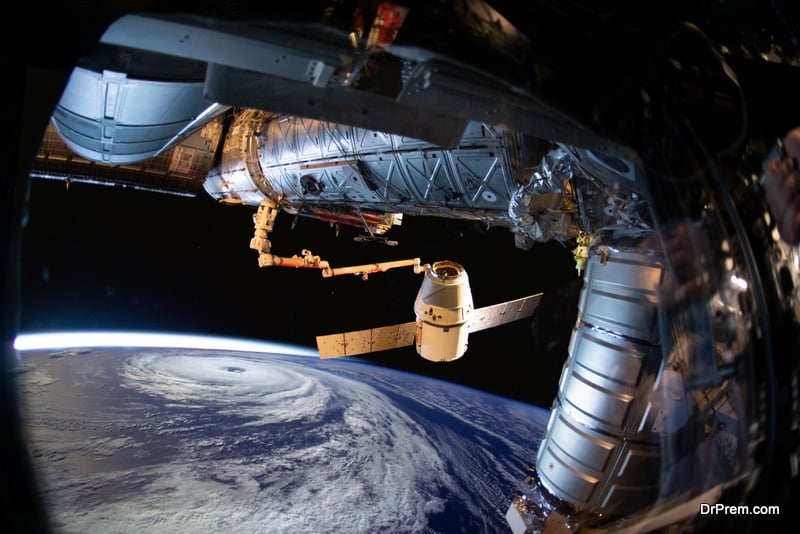
There is a surprising demand growth in space tourism as revealed by a web-based survey. 70% of the responders prefer less than or equal to 2 weeks of stay in space. 88% wished for space walk 14% of whom are ready to pay 50% premium, and 21% of the responders preferred putting up in a space hotel or space station.
It cannot be denied that currently space tourism is meant only for the “super rich”. With the growing volume of space tourists, the cost of touring space is likely to drop further. It may not be within the reach of the mass, but at some point, in the future, any person from the affluent middle-class of a developed nation can book a vacation in an orbital hotel.
A 2010 Federal Aviation Administration report predicts space tourism to become a billion-dollar market in the next 20 years. A NASA-funded study published in Geophysical Research Letters in 2010 voiced concerns about accelerated global warming from the growing commercial spaceflights.
Setting aside the environmental concerns, space tourism also has some real benefits like other niche tourism segments in terms of employment generation. One can hope for a great benefit if clean inexpensive energy from space could be made available pollution-free on the earth.
How to become a space tourist?
The prospect of space tourism is exciting as Jeff Bezos’ Blue Origin and Richard Branson’s Virgin Galactic plans to launch commercial sub-orbital space flights from 2022. But is it only the money that matters? What could be other credentials to become a space tourist. Let us talk about few of these in this space tourism guide:
Are you ready to shell out a massive amount of money?

Well, till date space tourism is meant for millionaires and billionaires. And definitely for the strong-hearted. Burning huge amount of cash for spending a few moments in the space is definitely not for the faint-hearted.
You need to be in a reasonable shape
Your body weight will matter. Not too fat or too thin. Virgin Galactic plans to launch a 5-day training where space tourists will learn to get adjusted to microgravity and how to make the best use of time. It will also train to remain safe and comfortable during the high acceleration phase.
Blue Origin, on the other hand, plans to train tourists everything that is needed for a safe space tourism. It will include some strength training and the person should have a desired height and weight.
Book your seats as early as possible
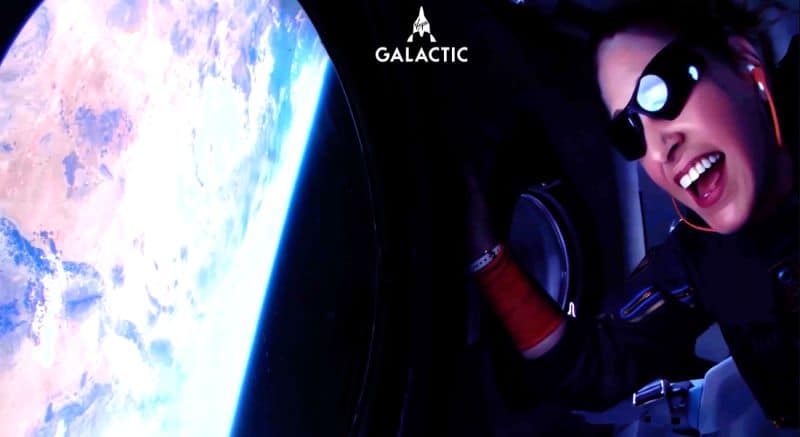
Image Source : virgingalactic.com
Virgin Galactic has a long waiting list with 600 tickets sold so far. But the company presumes it could send 400 flights per year. The initial two tourist per flight booking is up for grabs.
Get physician’s recommendation
This is not a usual type of travel. Get yourself checked by your physician before booking the ticket.
Special Space Travel Tips from Astronauts
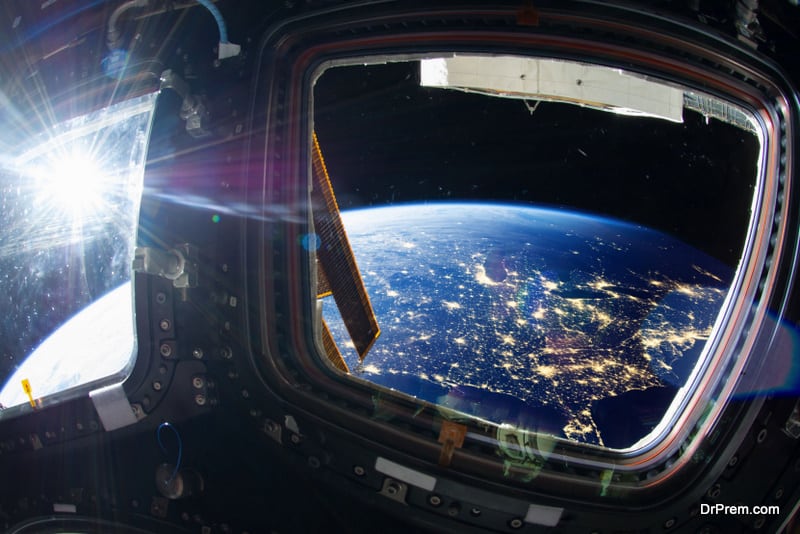
For all enthusiastic space explorers, this space tourism guide brings to you some great tips from professional astronauts as how space travel can be like and what you need to do.
Relax and enjoy the experience
Suborbital flights offered by Virgin Galactic and Blue Origin will be a short-term journey up and down the earth. Even if you are a first-time flyer, your job will be only to sit back and enjoy the experience. Just in normal flights you don’t need to do anything special, the same applies here. Only thing you can do beforehand is to talk to previous flyers to remove any nervousness creeping in any corner of your mind.
Ensure your physical and mental fitness

After all this will be a lifetime experience, so be in the pink of health to enjoy each and every moment of this marvelous experience. If you are not feeling right health wise or overtly anxious, you will miss the enjoyment. The more you are able to engage your senses in the space flight more rewarding will be the experience.
You will not be subjected to intense gravity
The impact of gravitational forces will not be that intense as you fear. You will experience strong forces during the launch and reentry but that is manageable as per professional astronauts. It would be almost like what you feel in a roller coaster ride or a car speeding up fast.
A pro tip – Relax your muscles and sink your body in the couch, you will handle it better. Being rigid might hurt, make sure your hands and legs are inside the couch.
Try a Zero G Flight for a first-hand experience on weightlessness
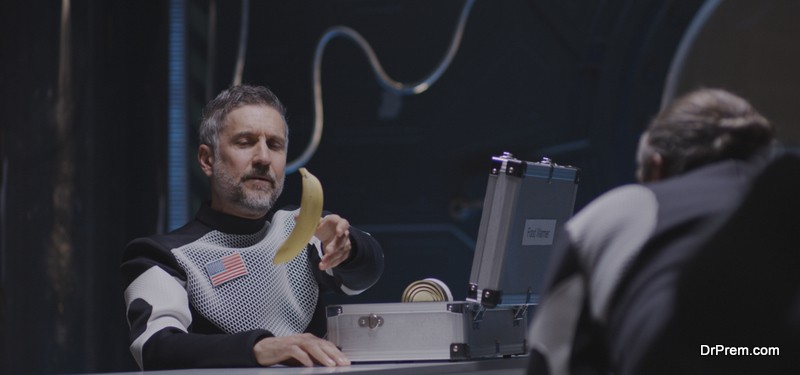
To get pre-acquainted with zero gravity experience, you can book a reduced gravity flight if that option is available. Such flights fly in a series of parabolic curves where passengers can feel the simulated experience. But better to be prepared for a pleasant surprise.
Learning scuba diving can help too
Scuba diving experience cannot be equated with that of floating in space, but it helps to get into the experience of weightlessness in space fairly easily.
You may experience a little dizziness
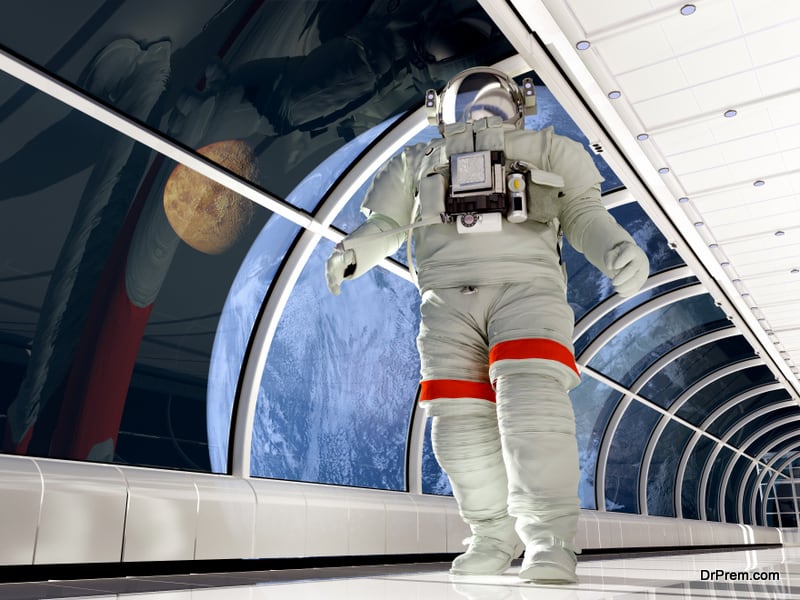
Your body will function a bit differently when it is removed from the usual gravity. You may feel full-headed. Prolonged stay can cause nausea and pooling of fluid in your legs.
Be ready for some bumps and bruises
There will not be much issue with sub-orbital flights where you will not have to spend a lot of time in space. If you spend a few days or weeks in space, you are likely to bump your head several times no matter how much you are trained to avoid that situation.
Difficulty in routine activities
Again, this is not a concern in sub-orbital flights. But in long stays, you can mess up with brushing teeth, using restrooms and toilets, or having meals.
Things You Might Not Know of Space Tourism
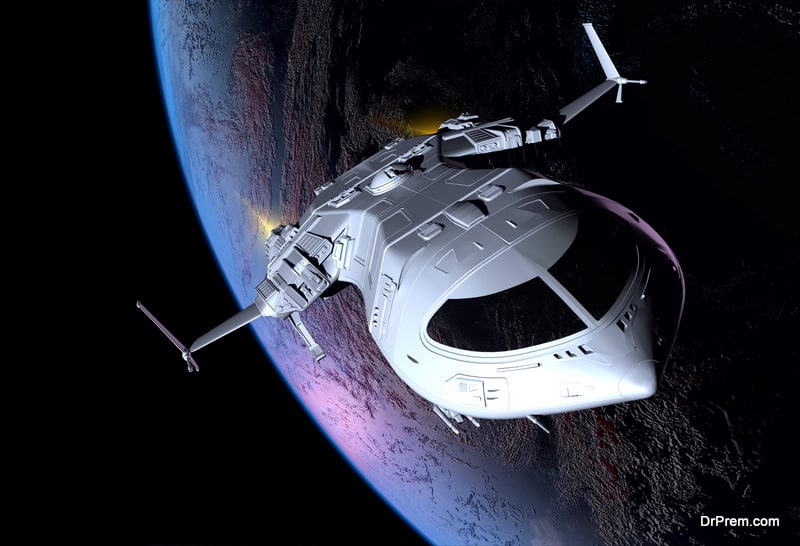
- You get to feel the overwhelming ‘Overview Effect’, a feeling of oneness when you can view the entire planet earth in a single glimpse.
- You can see wind shaping the deserts from the space craft.
- You can see manmade changes like the trimmed Amazon Forest due to immense cutting and forest burning.
- Boarding the spacecraft is an overwhelming experience too.
- Sleeping in the spacecraft is not an easy affair.
- Using loos can be messy even if you have prior knowledge of everything.
Pros and Cons of Space Tourism
Pros
- Space tourism will increase the commercial activity in the time of poor state of world economy. Space tourism will become a new area of commercial endeavour and give employment to thousands of people. Manufacturing of new and better spacecraft will give employment to many skilled people.
- It will renew interest in space exploration. As a result, there will be more financial backing to support more innovations in the industry.
- Another big advantage is the newsworthiness of this emerging industry. Anything that is new in this form of tourism will become news headlines. This will draw more investors making the tourism companies sustainable.
- It would also help in identifying potential hazards dangerous for our planet.
- Allows us to view humanity from a different angle rising above petty politics, conflicts, successes, failures and love-hate feelings.
- Opens avenues for advanced technology which can be applied to other domains apart from space missions.
- Advanced opportunities in space exploration may help scientists predict earth’s weather more accurately.
- The scientists may be able to find new minerals and other precious materials in space and other planets. This will be of great help to the people of Earth where natural resources are depleting fast.
- We may someday even discover life in some corner of universe, and learn from it. Exploring the space may lead to some discovery, which we cannot even imagine.
- Make space tourists aware of fragility of our planet. When people see Earth in dark space, and a thin layer of atmosphere they are forced to think of smallness of Earth, and it may induce us to respect our planet and preserve our natural resources.
- We may someday find a place where humans can live. This will be of great help to already over populated Earth.
- Open a new avenue for adventure tourists and people who love thrill.
Cons
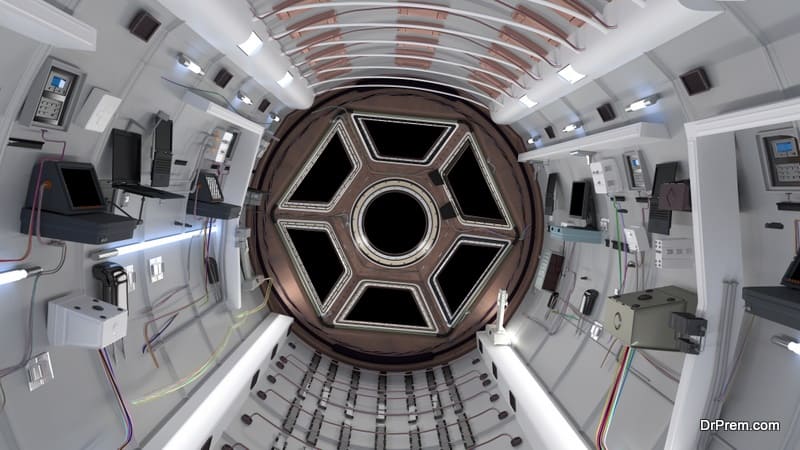
- Is the space outside the earth meant for humans? This is the first question that needs a proper answer.
- Space travel technology at the nascent stage can make entering space a dangerous venture. Space travelers are likely to get exposed to harmful radiations from the sun.
- Lack of proper regulation and inadequate safety protocols can make space travel extremely dangerous. Companies engaged in this form of travel may fail to stick to safety measures in a spree to gather more customers.
- Experimentation and unsuccessful ventures may cause an unnecessary waste of resources which is not just worth.
- Outdated information can cause serious problems in space travel.
- It may spark unhealthy competition with those having superior technology.
- Developing space programs and spacecrafts need a lot of money. That money can be utilized for alleviation of poverty. Thousands of hungry people can be fed using that money.
- More space tourism ventures are likely to put the lives of astronauts at risk.
- Space tourism is meant for the super rich. For example, a single 2 ½ hour flight ticket in Virgin Galactic’s upcoming space ship costs $ 250,000.
- Since the industry is in its infancy, lack of regulation regarding safety protocols may turn out to be hazardous.
- Several natural resources are wasted in flying the fuel guzzling rockets. It pollutes the atmosphere as well. Thus, space program is bad for our environment.
- Apart from the accidents that lead to loss of life, human beings have to face harsh conditions and adapt themselves to the unfriendly environment which is not good for their health. Spending long hours in zero gravity condition can be dangerous for the person’s cardiovascular and musculoskeletal system. If people accidentally get exposed to high-energy ionizing cosmic rays, it may lead to cancer.
- It is great to imagine people walking on the surface of Mars. It would not be wise to consider the escape to space will help in escaping the problems of earth. There is nowhere in the solar system where you can find the environment as congenial as that available on earth.
- It is fine to crave for thrill, but the whole human race may land into trouble if we find something lethal to life on Earth during some exploration. We may unwittingly introduce some harmful microorganism from space into the atmosphere of Earth.
Leading Companies aiming to take travel into the space
With the human ambition soaring to literally make the saying “The Sky is the Limit” a reality, a number of companies have come up in the commercial space travel sector, to help in the fulfillment of this motive. Many of them work with the support of NASA, and hence, can be considered reliable enough to entrust the realization of your dream to travel in space. The new generation spaceships will carry tourists to space and give them an opportunity to observe the terrestrial bodies from space and experience weightlessness. The charges to the tourists will of course be exorbitant, somewhere between $200,000 and $500,000The consumer space travel ventures of 10 leaders of this industry are discussed further.
Armadillo Aerospace
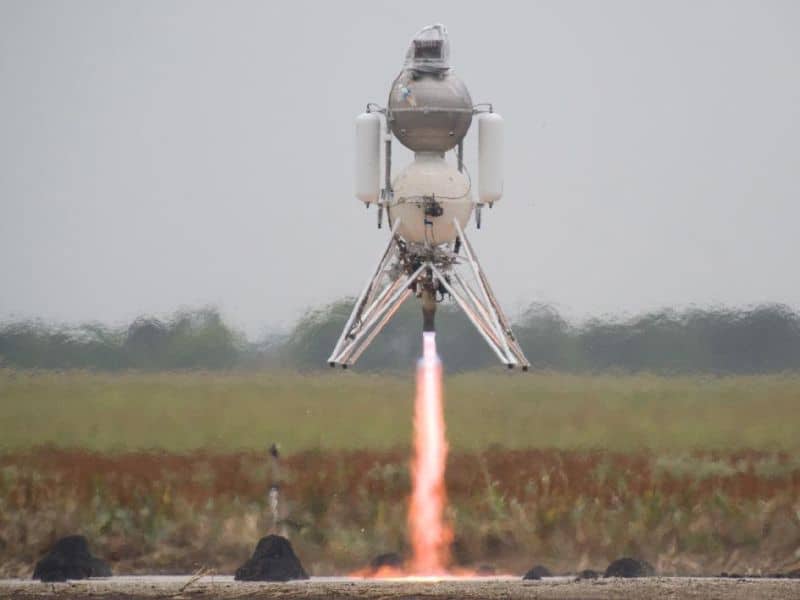
Image Source : nasa.gov
Armadillo Aerospace is presently working on suborbital space tourism for civilians. It builds reusable space vehicles that operate on the principal of rockets. One of greatest achievements of this company is gaining an approval to work with Space Adventures, which is a high-profile space tourism company.
Space Exploration Technologies Corporation (Space X)
Space Exploration Technologies Corporation (2002) is the brainchild of Elon Musk, who developed rockets to make space travel affordable to tourists. This company invented the first privately financed space shuttle to reach the earth’s orbit. This company, which developed the Falcon 9 for usage as a space station resources supplier, has also designed a capsule called Dragon on the top of the Flacon 9 for supplying cargo at present, but for being used for space travel by humans in the future.
NASA seems to have supported this company in its efforts to build the human travel feature with $ 75 million funding. The dummy capsule is successfully tested. This success proves to be a milestone in the efforts of this company in commercial space travel.
Virgin Galactic
Virgin Galactic is a leading name in the space tourism industry. This company already has a number of customers who bought tickets in advance for their space tourism venture. The company aims to provide suborbital space tourism to enthusiasts.
It also endeavors to provide orbital space flight to humans. This company prefers to launch its spacecraft from an airplane rather than the ground to provide better momentum to the space vehicle at the time of takeoff.
Masten Space
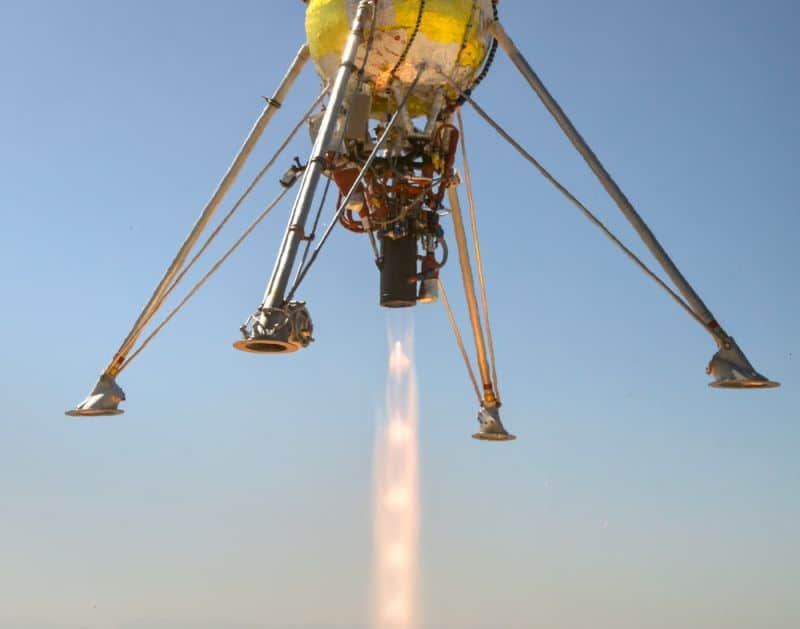
Image Source : images.squarespace-cdn.com
MAsten Space creates and designs new space vehicles which can be reused. However, unlike many consumer space travel companies, Masten Space makes unmanned suborbital spacecrafts for the consumers. If that seems risky for you, you should be informed that Masten Space is a specialist in unmanned consumer spacecrafts. However, you should seek assurance from the company itself regarding safety of travelling in unmanned spacecrafts.
XCOR Aerospace
XCOR Aerospace is the manufacturer of rocket engines, piston pumps and flight vehicles. It is also a leader in the commercial space travel industry. The EX-Rocket and X-Racer spacecrafts, manufactured by this company, have successfully completed 67 manned demos. This company sells tickets for space travel, with each ticket worth $95, 000.
Orbital Outfitters
Orbital Outfitters develops costumes meant to be worn during space travel by both consumers and astronauts. A very interesting and daring venture of this company is the development of a space suit that a space traveler can wear while travelling in space and dive from the spaceship and land on the earth safely.
Spaceport America
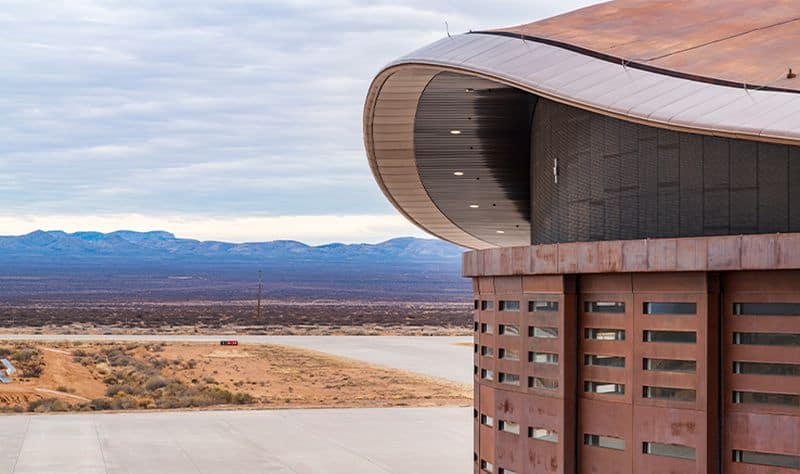
Image Source : spaceportamerica.com
Spaceport America takes the credit for developing the first commercial spaceport. A spaceport is seen to be similar in concept to an airport or a seaport. This company has leased out its spaceport to the Virgin Galactic company for using it as its main office. The lease is valid for 20 years.
Blue Origin
Blue Origin is a leader in the commercial space travel industry. It is founded by Jeff Bezos, the person who owns the famous e-commerce website, Amazon. Unlike a few other companies, Blue Origin is working towards the aim of providing space holidays to consumers at affordable rates.
The ventures of this company are progressively directed from suborbital to orbital flying, with each venture adding something of value to the previous one. The company is developing Vertical Takeoff and Vertical Landing type, rocket-powered, spacecrafts for consumer space travel.
Bigelow Aerospace
Bigelow Aerospace is an American space station creator. It is aimed at creating space stations with greater space in comparison to the conventional ones that are quite limiting in space.
The company uses inflatable material to achieve this. They expect to launch their expandable space station in 2014 and make it available for public use in 2015. This company provides orbital facilities, apart from commercial space stations.
Paragon Space Development
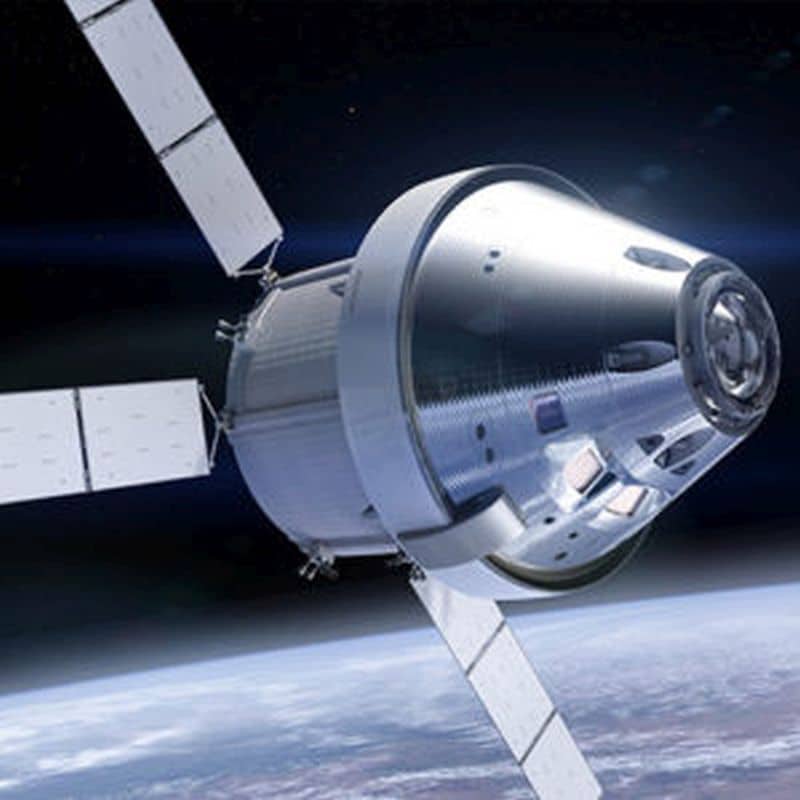
Image Source : paragonsdc.com
Paragon space development is involved in providing environmental control in the hardest of space weathers. This company creates and tests, life support equipment and accessories of astronauts and others present in the space ships.
This company was the first to produce a long duration video on the development and sustenance of life in space. It is also credited with performing the multi-generational animal life experimentation and commercial life experimentation on space.
CST-100 by Boeing
CST-100 is a spacecraft by Boeing in collaboration with Bigelow Aerospace. It aims to transport NASA’s crew to ISS and to private space stations. It uses proven technology from Apollo and space shuttle programs of NASA. This reusable spacecraft will support 7 people, and will be capable of remaining in the orbit for up to seven months. A number of tests are underway. It is expected to be operational by 2016.
Dream Chaser by Sierra Nevada Corporation
Sierra Nevada Corporation’s Dream Chaser is a suborbital and orbital spacecraft. It can carry up to seven people and will provide transportation service for crew and cargo of NASA to ISS and back to Earth. This reusable aircraft has a built-in launch escape system. It can land on airport runway like space shuttle did. It has undergone drop tests from a helicopter, and recently undergone motor firing and ignition test. It will be ready to begin operations by 2016.
Rocket by Stratolaunch
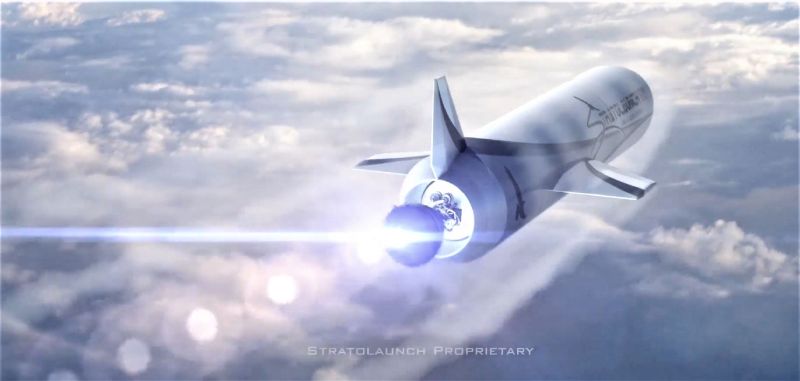
Image Source : teslarati.com
Stratolaunch Systems is planning to launch rockets to orbit. The carrier aircraft will have a wingspan of 117 meters, making it the largest airplane by wingspan. It will have a range of 2,200km on air launch missions. Initially it plans to send cargo and satellites into space, but ultimately it hopes to launch astronauts as well.
Liberty Launch System by ATK
Liberty launch vehicle by Alliant Techsystems (ATK) and Astrium, will fly astronauts to and from low orbits of Earth. A 91-meter Liberty rocket will blast into orbit a capsule, which can carry seven people. It has abort system and combines flight-proven elements. It may begin test flights in 2014 and first manned mission may occur in 2015.
How much you need to save before you travel into space

Are you fond of adventures? You have already experienced the thrills of paradropping, scuba diving, river rafting, mountain climbing and what not, and still up for more challenges? There is one more option to challenge your nerves. What do you think about space walk, or still better to take a walk on the surface of moon? I am not kidding. It is now possible. Space tourism is now a reality. Many people are now planning to go to space and experience the thrills of weightlessness. Up till now only government sponsored spacecrafts were launched into space but now a number of private players are developing commercial spacecrafts for space tourist. The only catch is that it is exorbitantly expensive. So how much will you need to experience the thrills of space tourism? Let’s see.
Cost of space travel
- In 2001, American billionaire Dennis Tito became the first space tourist to go on a trip to International Space Station. He had to shell out $20 million for the privilege of spending seven days in space. He was the first private client of Space Adventure, the only company to have launched private tourists to space up until now. The cost of such a trip now in the spacecraft of this company will be around $ 50 million. The company offers many more options- for additional $ 15 million you can be trained at ISS for a spacewalk, and experience the nothingness of space for 90 minutes or for $ 300 million, you can go for a trip to moon.
- This is not the only option available to you. Sir Richard Branson’s Virgin Galactic will take you to suborbital flight later this year for $ 20 million. Many celebrities like Ashton Kutcher and Justin Beiber have booked their flights; you can join in too. You will receive few days of training at Virgin Galactic Space centre, and then you will be launched into outer space at three times the speed of sound. Once in space, you will experience weightlessness and total silence for about six minutes and then you will return to mother Earth.
- Dragon capsule by Space Exploration Technologies can take you to orbital flight into 370 km orbit for $ 20 million per seat, or you can book a 7-crew package for $ 140 million. If you could wait for 10 to 20 years, you can explore Mars, or even settle there.
- If you want to settle for a little less, a subsidiary of Space Adventure, Zero Gravity is offering a Boeing 727 trip, where plane climbs to 34,000 feet, and then swirls to parabolas to give experience of weightlessness. This trip will cost you about $ 5,000.
Though prices are unbelievably high at this juncture, it is expected that when more vehicles will be launched, and more trips and better technology invented, the prices will go down. The high cost at present funds research and development of this fledgling industry.
Everything you need to travel to and back from space
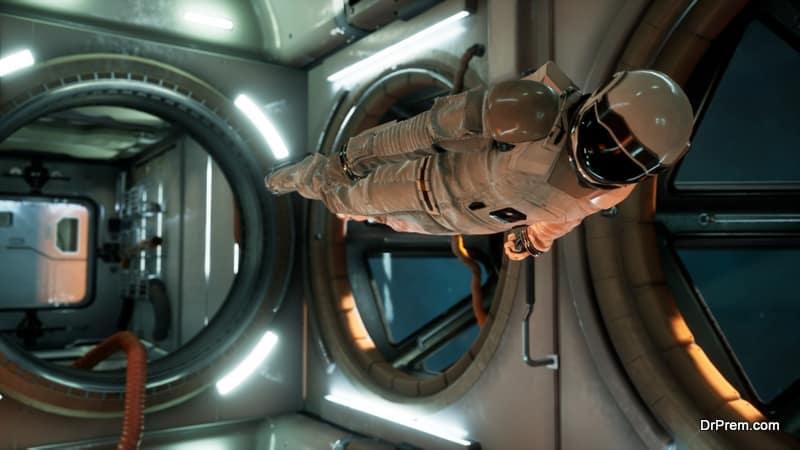
So, have you booked your seat for a trip to space? Now it is time to pack your bags. What are the things you are taking along for this adventure trip? You will have to do a little bit of planning to make your trip comfortable and safe.
- A spacecraft: If you want to go to space, you can do it perched safely in a spacecraft, which needs to be launched into space using a rocket.
- Control system: Some sort of system should be in place to control the journey of your spacecraft. When it will enter the space, the time when it should come back into the Earth’s atmosphere, should all be precisely planned and controlled. Ground crew and set of computers can be used to do this.
- Oxygen to breathe: Space is inhospitable to mankind. There is no air out there. So first thing you will require is obviously air to breathe. Air in Earth’s atmosphere is a mix of various gases, out of which we use oxygen in order to be alive and kicking.
- Insulation: Space is very cold, as there is no atmosphere there. You’ll need some kind of insulation to keep yourself warm. A space suit will be handy if you plan to venture out into the space. You will need pressure to keep your body working in space.
There are many kinds of harmful radiations, and there is drastic variation of temperature. When you re-enter the atmosphere of Earth, your capsule will be heated up. Therefore, your spacecraft should also be fitted with some kind of insulation.
- Water and nutrients: Our body needs food to replenish its energy. Therefore, some kind of food will be needed to get the required nutrients and energy. We also need water to keep ourselves hydrated. Learn to ration and recycle water so that you may not need to carry tons of water with you.
- Other needs: You have to take care of personal hygiene in space too. Don’t forget to carry few tooth brushes, and soap. There is no force of gravity in space. In order to avoid keep flying and banging on to various things in the spacecraft, you need something solid to remain anchored. A sleeping bag of some kind will also be handy.
- Tools to mend faults: Because of zero gravity many things break down in space. You will need some tools to repair the faults.
Apart from all these, you should have a plan B ready for any exigency. Everything may not go according to plan and somewhere something is bound to go wrong. Be prepared for some extra stay in space if required.




